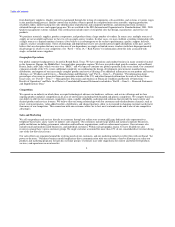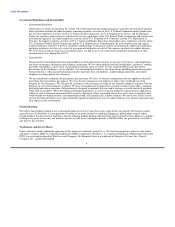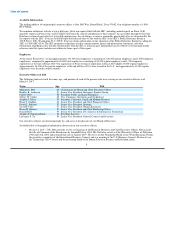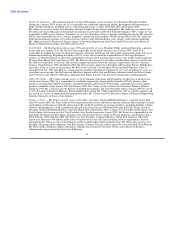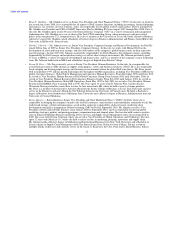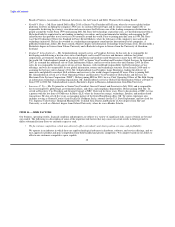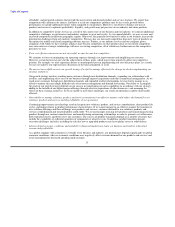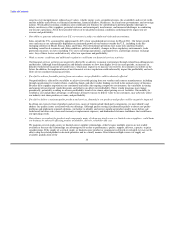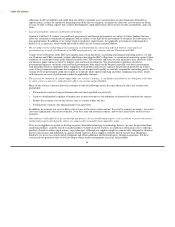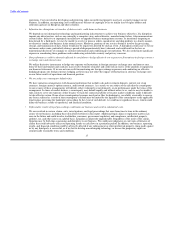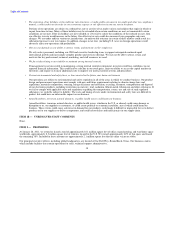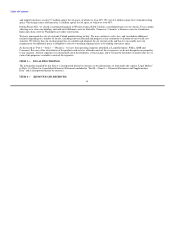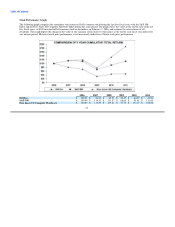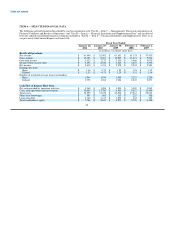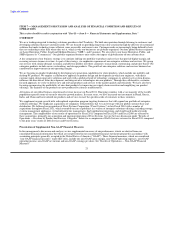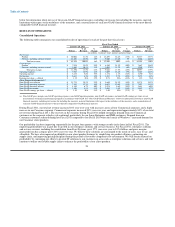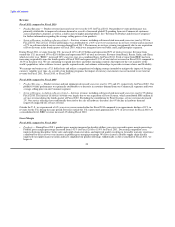Dell 2010 Annual Report Download - page 19
Download and view the complete annual report
Please find page 19 of the 2010 Dell annual report below. You can navigate through the pages in the report by either clicking on the pages listed below, or by using the keyword search tool below to find specific information within the annual report.
Table of Contents
alternative suppliers and establishment of reliable supplies could result in delays and a possible loss of sales, which could harm
our operating results.
We obtain many of our products and all of our components from third-party vendors, many of which are located outside of the
U.S. In addition, significant portions of the products we sell are now assembled by contract manufacturers, primarily in various
parts of Asia. A significant concentration of this outsourced manufacturing is currently performed by only a few of our contract
manufacturers, often in single locations. We sell components to these contract manufacturers and generate large non-trade
accounts receivables, an arrangement that presents a risk of uncollectibility if the financial condition of a contract manufacturer
should deteriorate.
While these relationships generate cost efficiencies, they reduce our direct control over production. Our increasing reliance on
these vendors subjects us to a greater risk of shortages, and reduced control over delivery schedules of components and
products, as well as a greater risk of increases in product and component costs. Because we maintain minimal levels of
component and product inventories, a disruption in component or product availability could harm our financial performance and
our ability to satisfy customer needs. In addition, defective parts and products from these vendors could reduce product
reliability and harm our reputation.
• We may not successfully implement our acquisition strategy.
We acquire companies as a part of our growth strategy. These acquisitions may involve significant new risks and uncertainties
that could adversely affect our profitability or operations, including distraction of management attention from a focus on our
current business operations, insufficient new revenue to offset expenses, inadequate return of capital, integration challenges,
retention of employees of acquired businesses, new regulatory requirements, and issues not discovered in our due diligence
process. Further, our acquisitions may negatively impact our relationships with strategic partners if these acquisitions are seen
as bringing us into competition with such partners. In addition, if we make changes in our business strategy or if external
conditions adversely affect our business operations, we may be required to record an impairment charge for goodwill or
intangibles, which would lead to decreased assets and reduced net operating performance.
• Our profitability may be adversely affected by our product, customer, and geographic sales mix and by seasonal sales trends.
Our overall profitability for any particular period may be adversely affected by changes in the mix of products, customers, and
geographic markets reflected in our sales for that period, as well as by seasonal trends. Our profit margins vary among products,
services, customers, and geographic markets. For instance, our services offerings generally have a higher profit margin than our
consumer products. In addition, parts of our business are subject to seasonal sales trends. Among the trends with the most
significant impact on our operating results, sales to government customers (particularly the U.S. federal government) are
typically stronger in our third fiscal quarter, sales in EMEA are often weaker in our third fiscal quarter, and consumer sales are
typically strongest during our fourth fiscal quarter.
• Our financial performance could suffer from any reduced access to the capital markets by us or some of our customers.
We are increasingly dependent on access to debt and capital sources to provide financing for our customers and to obtain funds
in the U.S. for general corporate purposes, including working capital, acquisitions, capital expenditures, funding of customer
receivables, and share repurchases. In addition, we have customer financing relationships with some companies that rely on
access to the capital markets to meet significant funding needs. Any inability of these companies to access such markets could
compel us to self-fund transactions with them or forego customer financing opportunities, potentially harming our financial
performance. The debt and capital markets may experience extreme volatility and disruption from time to time in the future,
resulting in higher credit spreads in the capital markets and higher funding costs for us. Deterioration in our business
performance, a credit rating downgrade, volatility in the securitization markets, changes in financial services regulation or
adverse changes in the economy could lead to
15



